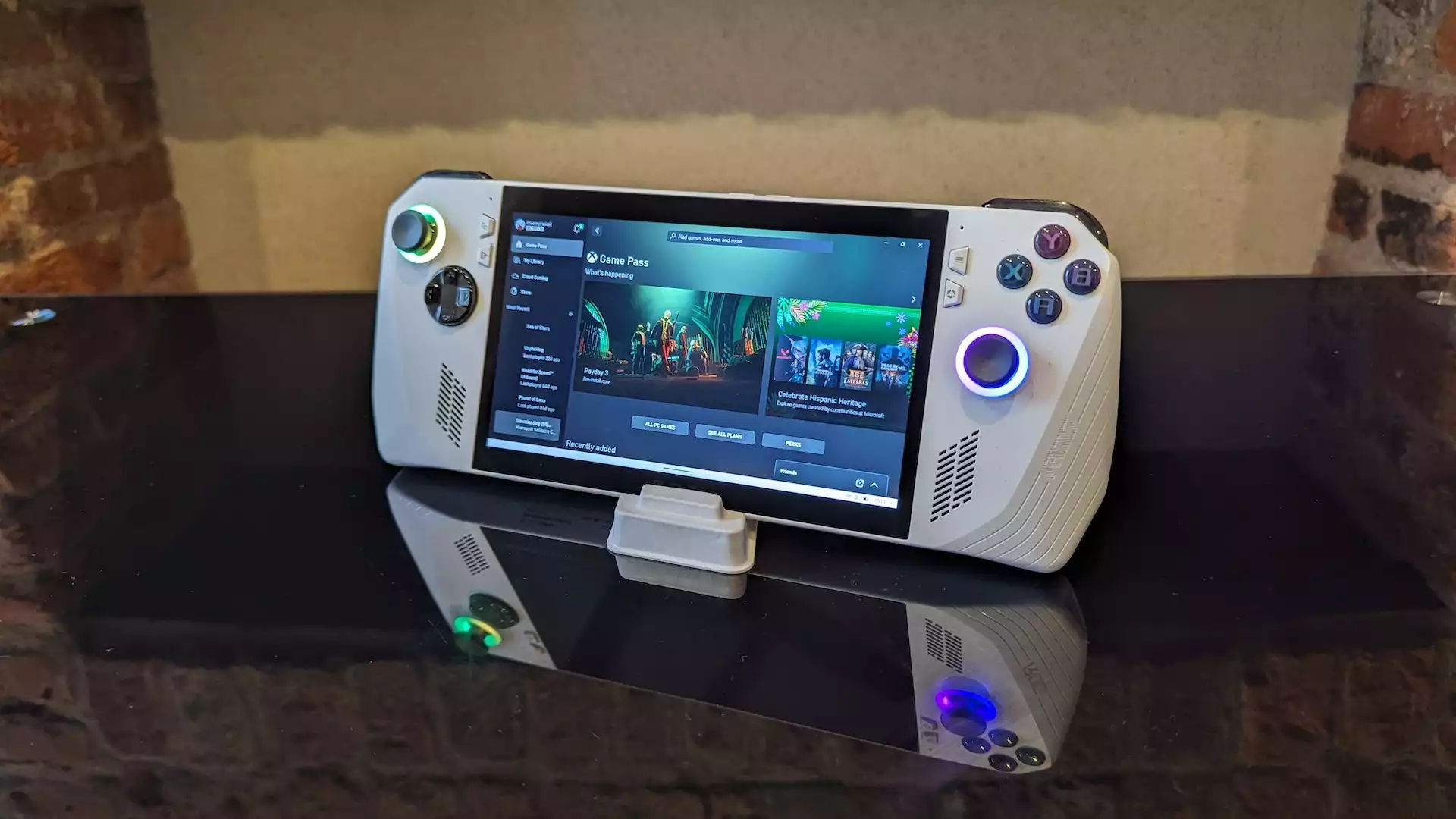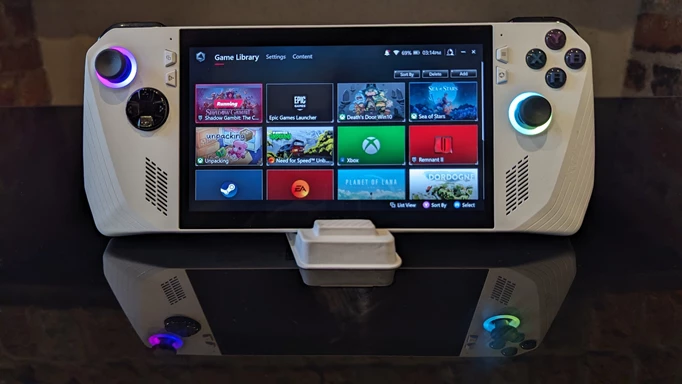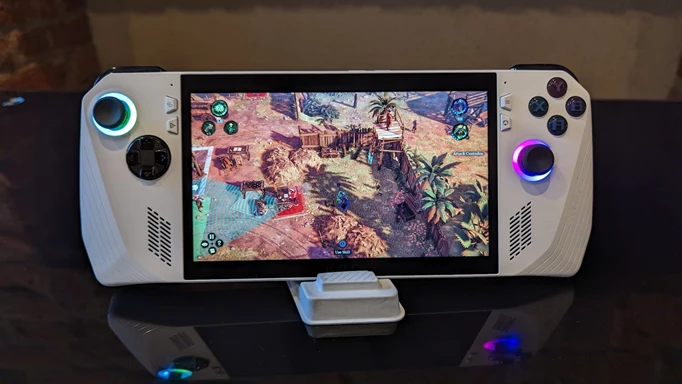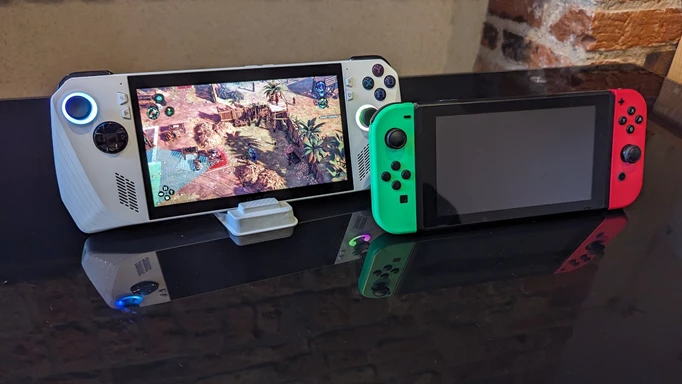ASUS ROG Ally Review - A worthy Steam Deck rival

There has arguably never been a better time to play games, with the hobby now as accessible or as obtuse as you want. Whether you choose to buy a ready-to-go console or you want to build a PC and get really into the nitty gritty, there is a place for you. However, if you want to game on the go, you will find yourself quite limited.
It's not for a lack of choice, but every handheld gaming option has an if, or a but. The Nintendo Switch is great but is now criminally underpowered and in desperate need of an upgrade, while mobile gaming offers a different kind of experience, and while cloud gaming is still threatening to become a reality via mobiles, but just isn’t quite there yet. Then there are the handheld PCs, full of promise but with an inherent agreement that you'll need to tweak numerous settings to get things just right.
And yet, I love the ASUS ROG Ally. As someone who's always leaned more towards consoles, this little handheld PC has stolen my heart in ways I wasn't expecting.
- Check out our Secretlab Titan EVO 2022 review
GGRecon Verdict
The ASUS ROG Ally is an excellent handheld PC that's capable of opening up even more gaming options thanks to its Windows base, but while Armory Crate is a great middle step, it's not quite the slick experience of SteamOS.
The battery life certainly limits portability, but if you're looking for a handheld PC to play on the sofa, it's well worth a look.
Simple to use

 Click to enlarge
Click to enlargeThis is where the ASUS ROG Ally steps up. It is easy to use for a console player, with it laid out like a regular Windows PC, accompanied by ASUS's Armory Crate app to access your games. To access Armory Crate all you need to do is press the assigned button - found under the start button. Armory Crate simplifies the process and makes the ROG Ally approachable for someone like me; you push the button, the menu with all your games appears and away you go.
It still isn’t quite as intuitive as the SteamOS that has been developed for the Steam Deck, which helps make Valve's handheld so easy to use. Yet, because this is a Windows device, loading in non-Steam games is considerably easier than on the Steam Deck and Xbox Game Pass is so easy to use. Xbox Game Pass remains one of the best services in gaming, and it’s very easy to see this as the handheld device positioned best as a vessel for Xbox Game Pass on the go - which is by no means a bad thing. It's also easier to add third-party launchers, and you can run the likes of Destiny 2 on the ROG Ally - something you won't get on the Steam Deck.
Armory Crate is a great feature, but it still isn’t a replacement for SteamOS, and not having a dedicated OS is certainly something that'll sour some. When not using Armory Crate, the ROG Ally, for all of its stylish design, is a Windows PC with an extra layer of clumsiness.
- Check out our review of the Edifier MS50A
Picture perfect screen at a cost

 Click to enlarge
Click to enlargeWhere the OS may be a double-edged sword, the ROG Ally's display shines. Everything you play looks amazing, the colours are incredibly vibrant and it pops in a way Steam Deck can only dream of. We are treated to a 7-inch display, with a 120Hz refresh rate and 1080p screen. For this to be on a handheld is impressive, and the display is nothing short of magnificent when playing games. You also have the option, in the settings, to lower the frame rate or resolution of the screen to help games run better or preserve the battery life.
The battery life is what will always hold handheld gaming back, and the ASUS ROG Ally is unfortunately struggling in this area. If you reduce everything down, the brightness, resolution, frame rate, and play in Silent Mode, you may be able to get four hours out of it, at a push, if you’re playing a less intensive game.
If you opt to play in Turbo Mode, you will be lucky to get three hours out of the battery, especially for the more demanding games. Realistically, a game like Cyberpunk 2077 or Elden Ring in Turbo Mode barely lasts more than 60 minutes. The ASUS ROG Ally may be a handheld, but it isn’t going to get you very far without a charger.
- Check out our review of the Victrix Pro BFG
Handheld gaming... not on the go

 Click to enlarge
Click to enlargeWhen you’re playing with a charger nearby, the ROG Ally is at its best. By plugging the device in you get a boosted version of Turbo Mode, allowing games to run even better. For myself, this is perfect, I often found myself playing the ROG Ally on the sofa, whilst my partner watched TV, but I am aware this is not what many people want a handheld device for.
I have no commute and it is mainly used as an alternative way to play games in the home, though. If you’re like me, the battery life won’t hold you back and games will run even better because you can be plugged in, but we are certainly in the minority and that isn't what the appeal of a handheld is to many.
When you are strapped in for a lengthy spell, the ASUS ROG Ally is comfortable to play. It is smaller and lighter than the Steam Deck, despite boasting a nicer screen and a more powerful processor, and I never felt uncomfortable playing. Those who have enjoyed the Steam Deck will miss the trackpads, and they are a great addition to handhelds - noticeably lacking from the ROG Ally, especially when manoeuvring through menus or the Windows interface.
The only other gripe, albeit minor, is in the box you only get the console and the charger. When compared to something like the Steam Deck that includes a carry case, this feels like a huge miss. When you're dropping £699.99/$699.99 for the more powerful version, some extras in the box would go a long way, especially when there is an official case but it'll run you an extra £24.99.
The Verdict
The ASUS ROG Ally is an excellent handheld PC that's capable of opening up even more gaming options thanks to its Windows base, but while Armory Crate is a great middle step, it's not quite the slick experience of SteamOS.
The battery life certainly limits portability, but if you're looking for a handheld PC to play on the sofa, it's well worth a look.
4/5
Review unit provided by the manufacturer.
